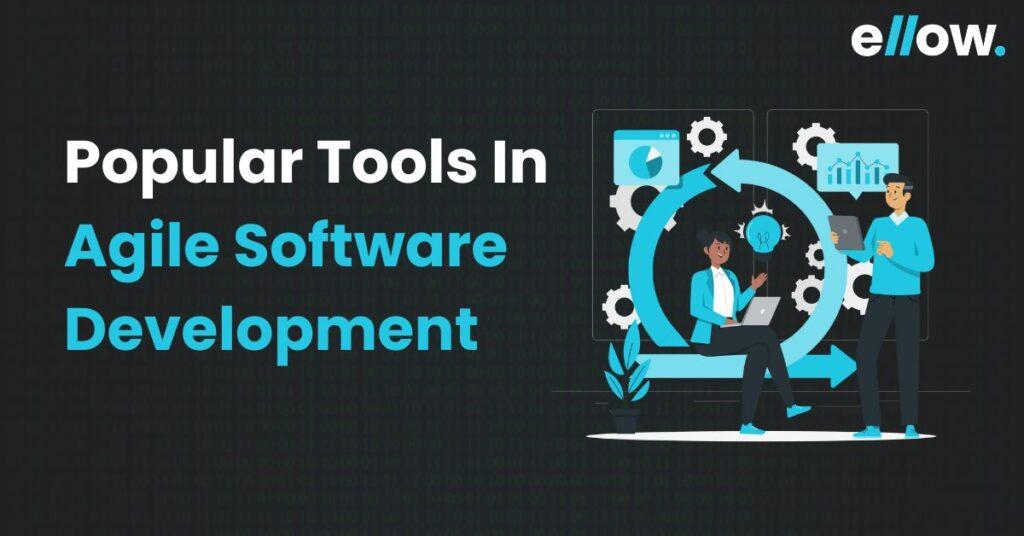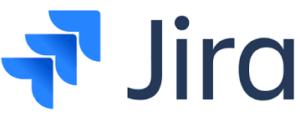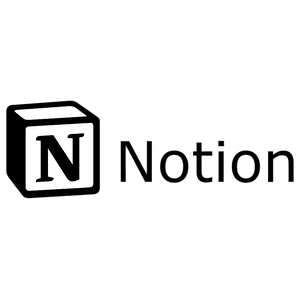
Let’s build the future together.
Great ideas need great people. Partner with us to bring your vision to life, or take the first step in your career by joining our team of innovators.

Agile software development has revolutionised software engineering and has transformed the way teams function and collaborate with each other. It has enabled swift adaptation and accelerated value delivery to customers. To do this teams leverage a diverse set of tools tailored to the agile framework. Within agile teams, selecting the right tools for each phase is paramount but can be overwhelming given the crowded market.
This article explores agile tools and techniques, their necessity, and the essential ones for agile management in 2023. But before we take a deep dive into popular tools in agile software development, let us understand What is Agile, The Agile Manifesto, and the benefits of using Agile Tools.
Agile is used across industries: Software development is the most common area of Agile adoption (86%), but it is also used in IT (63%), operations (29%), marketing (17%), security (17%), HR (16%), sales/sales ops (11%), and finance (10%). (Source)
The concept of Agile is not new and has been part of the workforce since 2001. Numerous companies throughout the years have adopted and improved it at the same time.
Agile, or Agile Process Model, is a set of principles and values or approach in software development that is based on an iterative approach and focuses on flexibility, collaboration, and customer-centricity. It is not a specific methodology or a set of rules, but simply an approach to software development.
It involves breaking down the project into smaller iterations or phases, and the team focuses on continuous collaboration and improvement through a cycle of planning, executing, and evaluating.
There are six phases of the Agile Model which are as follows:
Agile or Agile Process Model is based on the Agile Manifesto that has been highlighted in the next section of our article.
The Agile Manifesto is a set of guiding values and principles for software development that prioritise flexibility, collaboration, and customer satisfaction. It was created by a group of software developers in 2001 who were looking for better ways to develop software and respond to changing customer needs. The manifesto consists of four key values and twelve principles:
These values and principles provide a framework for Agile methodologies such as Scrum, Kanban, and Extreme Programming (XP), which aim to promote iterative and flexible software development processes that can respond effectively to changing requirements and customer feedback.
The right agile tool, when used in software development is beneficial to both the team and the organisation. The core backbone of the agile methodology is flexibility and adaptability, and the right tool just enhances it. Here are the key benefits:
The right set of tools enables teams to collaborate and monitor progress seamlessly.
Version Control System is crucial to modern software development. They allow teams to manage changes to their source code effectively, collaborate seamlessly, and track historical records of changes. In the context of agile software development, selecting the correct VCS is crucial as it impacts team collaboration and how they effectively maintain code quality, thereby affecting the reliability of the software.

Git is a free and open-source distributed version control system that is an indispensable tool in agile software development. It enables collaborative coding among teams, helps track changes and version control, and ensures continuous integration throughout the development process. Torvalds started Git development in 2005, and it is considered to be an easy-to-learn VCM tool. It can easily handle small and large projects efficiently and effectively.
Features of Git:

Subversion (SVN), also known as Apache Subversion, is one of the most popular version control systems. It was created by CollabNet Inc. in 2000 and is now developed as a project of the Apache Software Foundation. Like Git, it is open-source and used to manage and track version changes of source code, web pages, and documentation. Being distributed and open source, there are many documents and repositories for reference.
Features of SVN:
Project management and issue-tracking tools play a crucial role in agile software development. They enable seamless collaboration and communication between the team and cross-functional teams. It becomes easier to plan, prioritise, and track tasks and projects. This not only ensures transparency but also goal alignment. Moreover, it helps identify issues that need to be addressed quickly and helps in continuous improvement. The tools enhance productivity and ensure delivery of high quality software in the agile environment.

Jira, developed by Atlassian, stands as a versatile and widely recognized project management and software tracking tool used by almost 65,000 companies worldwide. It is an immensely popular tool for Scrum and Kanban agile methodologies. Projects of all sizes and complexities can be easily planned, tracked, and managed using Jira. It enables efficient collaboration, task prioritisation, and real-time progress monitoring with its multitude of features, such as customizable workflows, issue tracking, and seamless integration. They have over 1,000 add-ons in the marketplace, can integrate with over 3,000 applications, and have a community of over 1,70,000 members.
Features of Jira

Trello has a user base of over 50 million individuals and teams, and is known to simplify collaboration and project management. With simple, intuitive, and visually appealing interfaces, it is built around the concept of digital boards, lists, and cards. Trello records 1.1 million daily active users and more than 30 million weekly card creations and has become a go-to for individuals and organisations seeking streamlined project management solutions. From creative agencies to tech startups, it is used across diverse industries.
Features of Trello
CI/CD tools are the backbone of agile software development. They enable teams to automate the integration, testing, and deployment of code changes. Widely used tools like Jenkins, GitLab CI/CD, and Travis CI empower developers to deliver software faster and with higher quality. CI/CD tools ensure that the software code is consistently being built, tested, and deployed.

Jenkins is a powerful open-source automation server. It has become a cornerstone for continuous integration and continuous delivery (CI/CD) pipelines, with over 1.6 million active users worldwide. It seamlessly integrates with multiple development and deployment tools and supports over 1800 plugins. Monthly, 3.5 billion jobs are executed on the platform. It helps in streamlining software development, automating tasks that are repetitive, and reducing software delivery cycles.
Features of Jenkin

Travis CI boasts a user base of over 600,000 developers and 900,000 open-source projects. It is a go-to choice for automating software testing and deployment processes. This is a cloud-based CI/CD platform that supports a wide range of programming languages and environments, with 64 million builds executed every month. It is known to accelerate software development cycles and improve collaboration and code quality.
Features of Travis CI
Collaboration and communication are two pillars of agile software development. It enables effective, seamless and cohesive communication, sharing of information, and responding immediately to changing requirements.

Slack is a versatile communication and collaboration tool that supports real-time messaging, file sharing, and integration capabilities and fosters seamless communication among cross-functional teams. Slack channels serve as dedicated spaces for discussions and sharing updates. It easily integrates with other agile tools like Jira and Trello, making project management easy. It has a user-friendly interface, robust search capabilities, and multiple third-party integrations.
Features of Slack:

Microsoft Teams integrates seamlessly with the Microsoft 365 suite and has over 145 million daily active users. They provide an efficient platform for collaborating, communicating, and managing projects. Microsoft Teams serves as a single platform sharing documents and tracking tasks, real-time chat and videoconferencing, and streamlining overall project workflows. Compliance, data integrity, and security features make it appealing to small or big businesses.
Features of Microsoft Teams
In the era of agile software development, data-driven decision making is crucial. Agile Metrics and Analytics Tools help teams gather, analyse, and visualise data to assess their performance, track progress, and identify areas for improvement.

Jira Align, formerly AgileCraft, seamlessly aligns agile methodologies with strategic business objectives. It has become instrumental in supporting large-scale agile transformations, boasting an impressive user base of over 1,000 enterprises worldwide. This powerful platform offers a holistic view of an organisation’s agile initiatives, providing critical insights and analytics that empower teams to make data-driven decisions, ultimately propelling projects toward successful outcomes.
Features of Jira Align

Targetprocess is a visual platform that provides organisations with the flexibility to manage work across individual teams to entire enterprises. Thousands of organisations and users worldwide are using Targetprocess to leverage its project management capabilities. The visual approach enables teams to plan, track, and adapt projects efficiently, promoting collaboration and transparency.
Features of Targetprocess
Automated Testing Frameworks enable teams to automate the software testing process. It is critical to ensure the quality, reliability, and consistency of the software product in the agile software development methodology.

Selenium is one of the most extensively used open-source Automated Testing Frameworks for web applications. It provides a suite of tools and libraries that facilitate automated web browser testing. Selenium supports multiple programming languages that ensure its compatibility with a wide range of development environments.
Features of Selenium

JUnit is a widely used testing framework for Java applications that provides a standardised way to write and execute unit tests. It is essential to validate individual units of code. In fact, statistics reveal that JUnit has been downloaded by over 11 million users and was employed by countless developers worldwide. The parameterized testing, integration with popular IDEs, and its annotation feature during test setup and teardown makes it an indispensable tool for Java developers.
Features of JUnit
Code Review and Quality Assurance Tools play a crucial role in agile software development. From code quality, identifying issues, and fostering collaboration among team members, it seamlessly integrates all the processes.

GitHub is a web-based platform that offers robust code hosting, seamless version control, and powerful collaboration features. With over 56 million developers and more than 100 million repositories hosted on the platform, it is crucial for countless development teams worldwide. In addition to being version control software, it facilitates efficient code reviews, issue tracking, and project management. With GitHub, teams are able to streamline their development workflows and improve code quality.
Features of GitHub

SonarQube is an open-source platform that enables continuous inspection of code quality. For project managers and software developers, it provides them with the toolkit to automate code analysis, identify code smells, bugs, and security vulnerabilities, and suggest improvements. SonarQube’s ability to enhance code quality, security, and minimise technical issues makes it a preferable tool for project management and software development and is used by over 180,000 organisations worldwide.
Features of SonarQube
Document and knowledge management tools help cross-functional teams create, organise, and share project-related information. It ensures that everyone has access to needed data and knowledge, and everything is up-to-date and organised.
Confluence, developed by Atlassian, is a popular collaboration and documentation tool with a user-friendly interface and robust features. It offers teams a central space for creating, sharing, and collaborating on documentation and project-related content. Statistics show that it has helped teams increase productivity by up to 15% and reduce time spent searching for information by 25%. It streamlines communication among teams and helps in efficient project management.
Features of Confluence

Notion is an all-in-one workspace that seamlessly combines note-taking, task management, and documentation. With its intuitive interface and customizable features, Notion empowers teams to effortlessly create and organise knowledge and documentation. It has a user base of over 10 million and is trusted by companies like McDonald’s and IBM. Teams using Notion have seen a 20% increase in productivity and a 30% reduction in time spent searching for information.
Features of Notion:
DevOps and Infrastructure as Code (IaC) Tools enable teams to automate and manage the deployment, configuration, and scaling of infrastructure and applications, fostering collaboration between development and operations teams.

Docker, a containerization platform, revolutionises project management by its functionality to encapsulate applications and their dependencies within containers. They are known to streamline development, testing, and deployment of applications across diverse environments because of the container’s capability of being lightweight, portable, and consistent. Reportedly, almost 94% of organisations have improved their application lifecycle management using Docker. It bridges the gap between development and operations to enhance collaboration and efficiency.
Features of Docker

Kubernetes, often referred to as K8s, is an open-source container orchestration platform, and is an important tool in agile software development. It automates the processes of deployment, scaling, and management of containerized applications in clusters of machines. Kubernetes is immensely popular, and over 91% of Fortune 500 companies utilise it for container orchestration. Its capacity to boost scalability, minimise downtime, and optimise application management significantly contributes to its rapid adoption.
Features of Kubernetes
Agile Project Reporting and Visualization Tools are essential components of agile software development that enable teams to track progress, visualise data, and communicate project status effectively. Two prominent examples of these tools are Tableau and Power BI.

Tableau is a data visualisation and business intelligence solution that has a user base of over 86,000 accounts, and 91% of the Fortune 500 companies use it as a project management tool. It can establish a seamless connection between diverse data sources and can interpret complex datasets. With interactive visualisations and collaborative features, it is a tool that all stakeholders can leverage to gain valuable insights, make informed decisions, and drive business success.
Features of Tableau

Power BI is an analytics tool by Microsoft for data visualisation, knowledge sharing, and data-driven decision-making. It is one of the leading project management tools with over 5 million subscribers worldwide. Microsoft’s Power BI seamlessly integrates with Excel and Azure, and is a versatile platform that transforms raw data to interactive visualisations.
Features of Power BI
The numerous agile tools on the market can sometimes be confusing when you are investing in an agile tool. Be sure to ask yourself these questions before you invest in one.
Once you have answered the questions, it should be easier for you to invest in a tool the reaps the maximum benefits.
Great ideas need great people. Partner with us to bring your vision to life, or take the first step in your career by joining our team of innovators.
Looking to build your career in development? team@ellow.io